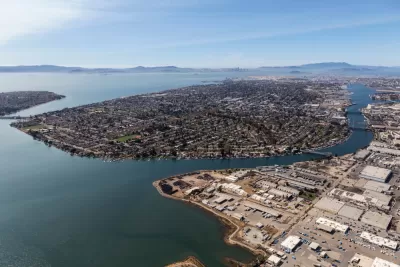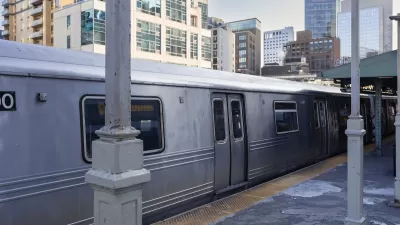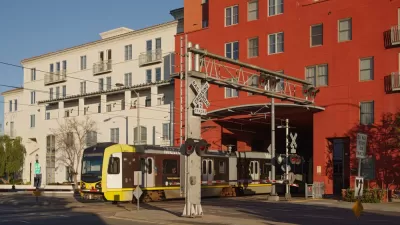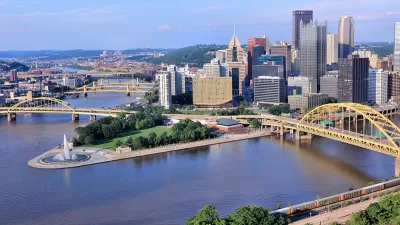The region's transit-oriented development (TOD) plan requires a significant update to achieve the density and housing goals laid out in the MTC's 30-year vision.

In a detailed article, Jonathon Kass, transportation policy manager for SPUR, lays out a case for updating the Bay Area's plan for transit-oriented development (TOD), first developed in 2005.
Kass argues that achieving the vision laid out in the Metropolitan Transportation Commission (MTC)'s Plan Bay Area 2050–a 30-year vision for reaching climate goals, addressing the housing crisis, promoting equity, and improving transportation–requires a focus on transit-oriented communities and a revision of the state's outdated TOD plan, which does not do enough to incentivize effective TOD.
Kass asserts that to overcome local opposition and address community concerns effectively, local jurisdictions will "need incentives to encourage them to plan areas around transit as equitable, sustainable population and job centers. It is MTC’s job to create policies that encourage all communities to advance these regional goals."
According to Kass, the current TOD policy "is not only failing to deliver the transit-oriented communities we need, it is doing harm" with outdated density guidelines and a lack of protections against displacement or incentives for creating jobs or other services in TOD neighborhoods.
Kass provides a list of priorities that the new policy should address. These include: setting density growth targets for existing transit stops, prioritizing commercial development to create jobs and services, mandating community stabilization policies, and eliminating parking requirements.
Read the source article for the full list of suggestions and proposed improvements to the TOD policy.
FULL STORY: The Bay Area Won’t Meet Its Goals Without a New Transit-Oriented Development Policy

Study: Maui’s Plan to Convert Vacation Rentals to Long-Term Housing Could Cause Nearly $1 Billion Economic Loss
The plan would reduce visitor accommodation by 25,% resulting in 1,900 jobs lost.

North Texas Transit Leaders Tout Benefits of TOD for Growing Region
At a summit focused on transit-oriented development, policymakers discussed how North Texas’ expanded light rail system can serve as a tool for economic growth.

Using Old Oil and Gas Wells for Green Energy Storage
Penn State researchers have found that repurposing abandoned oil and gas wells for geothermal-assisted compressed-air energy storage can boost efficiency, reduce environmental risks, and support clean energy and job transitions.

Private Donations Propel Early Restoration of Palisades Playground
Los Angeles has secured over $1.3 million in private funding to restore the Pacific Palisades playground months ahead of schedule, creating a modern, accessible space that supports community healing after recent wildfires.

From Blight to Benefit: Early Results From California’s Equitable Cleanup Program
The Equitable Community Revitalization Grant (ECRG) program is reshaping brownfield redevelopment by prioritizing projects in low-income and environmental justice communities, emphasizing equity, transparency, and community benefits.

Planting Relief: Tackling Las Vegas Heat One Tree at a Time
Nevada Plants, a Las Vegas-based nonprofit, is combating the city’s extreme urban heat by giving away trees to residents in underserved neighborhoods, promoting shade, sustainability, and community health.
Urban Design for Planners 1: Software Tools
This six-course series explores essential urban design concepts using open source software and equips planners with the tools they need to participate fully in the urban design process.
Planning for Universal Design
Learn the tools for implementing Universal Design in planning regulations.
Ascent Environmental
Borough of Carlisle
Institute for Housing and Urban Development Studies (IHS)
City of Grandview
Harvard GSD Executive Education
Toledo-Lucas County Plan Commissions
Salt Lake City
NYU Wagner Graduate School of Public Service





























